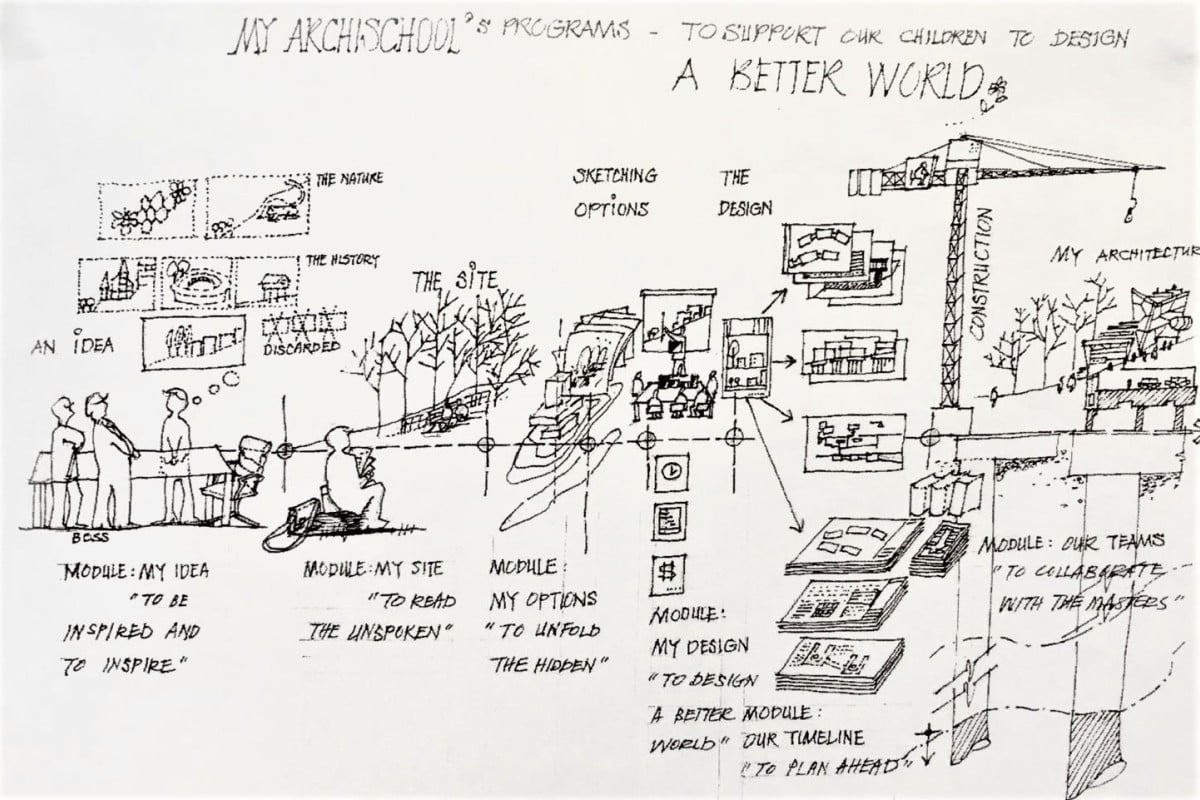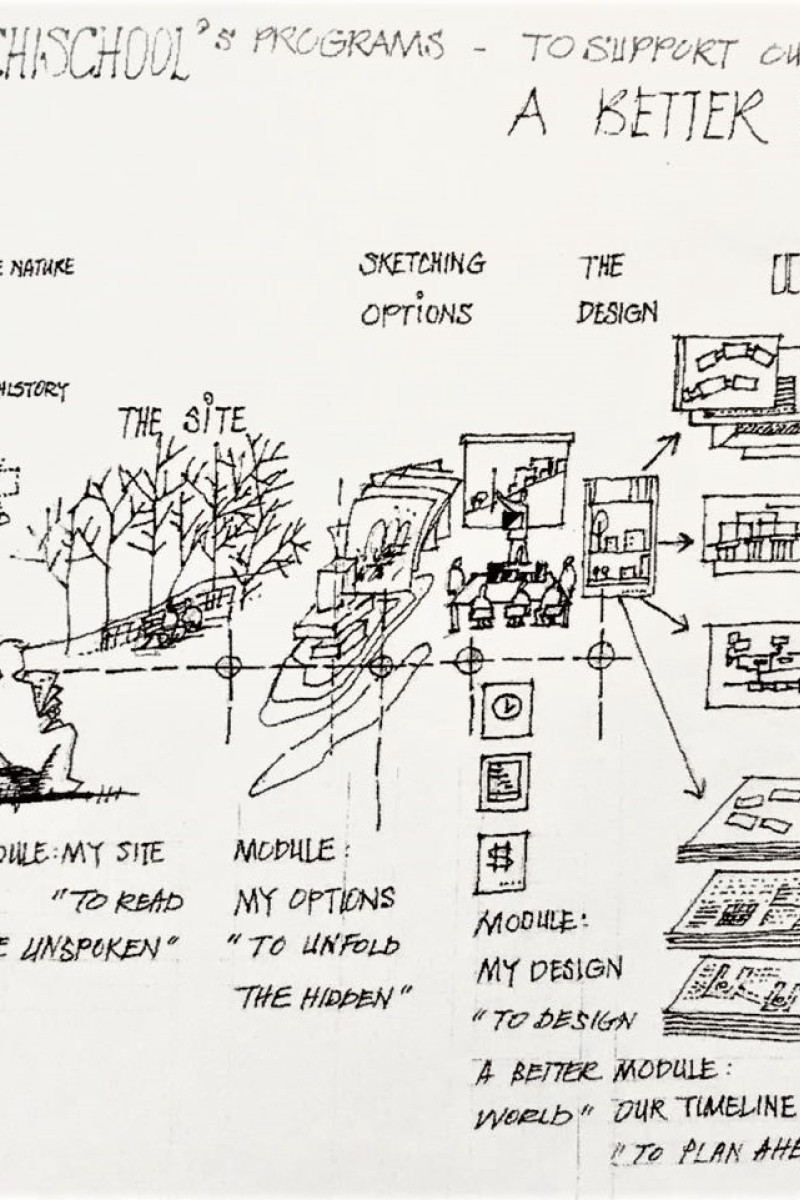 Sketching and illustrating is common in the daily work of an architect.
Sketching and illustrating is common in the daily work of an architect.If you’re thinking of training as an architect, it’s important to know what the role involves on a day-to-day basis.
We might say that a project generally starts when a client has a piece of land on which they plan to construct one or a collection of buildings intended to serve a specific purpose. This might be to give people somewhere to live, an office where they can work, a place to run a money-making business, or perhaps even to have a monument to themselves and their achievements.
For any of these objectives, it is essential to have a good architect, or a team of building consultants, to get the job done. There are different ways of going about any building project, but in practical terms, the architects involved will have to take clear and methodical steps as part of their daily routine to ensure everything moves forward on time and on budget.
Architecture as art in the digital age
The first stage is to study design and feasibility, followed by site analysis and investigation. There is then a project design stage before a presentation to agree on the design and the outline building programme.
In some cases, it is necessary to prepare and complete a tender process. After that is the construction stage, leading on to the period of building completion and maintenance.
These stages should be part of any project, anywhere in the world, no matter the type of building, the site or footprint. This also explains why all kinds of different skills and talents can find a place in professions allied to the building industry. There is a need for everything from artists to engineers, surveyors to financial analysts, and contract administration teams to on-site specialists.
Some young people may find themselves naturally attracted to one part of the process, say the design stage, where they will have to liaise with colleagues and clients to understand and accommodate work schedules and design parameters. Alternatively, those interested in the engineering disciplines will spend more time on aspects of the actual construction and implementing the details of the design.
However, for anyone who plans to become an architect, it is important to have the following qualities:
Creativity and communication skills
Of course, we know that creativity is a quality that employers in every sector are looking for. They all want to recruit individuals who can identity opportunities and come up with brand-new ideas. But we should also remember that some of the creative ideas put forward by young people are not really feasible. The best ideas are properly thought out and then well presented in a comprehensive way that takes due account of many of the likely questions. In business and architecture, great ideas are those that can work for clients, not just an optimistic flight of fantasy.
How to add 3D models into PowerPoint presentations
So, if the client has land to build on, the first thing is to achieve the stated purpose. That means listening to, digesting and interpreting the client’s needs to find a design that meets all the basic requirements. Whatever ideas the architect has must be fit the overall scheme and be fully and clearly explained, which is where good communication skills come in.
In the broadest sense, practising those skills can include the use of models, drawings, artwork and animations, all which can help the client visualise different design concepts. However, verbal explanation is also vital. There is usually no call for long speeches or countless details. But the ability to explain something effectively to a client or an on-site team helps to avoid misunderstandings and ensures everything runs more smoothly.
Curiosity and intelligence
Every day an architect has to work with experts in many different fields and think quickly in order to sort out both foreseeable problems and unexpected difficulties. This requires in-depth knowledge of on-the-job practices and industry processes, as well as the curiosity to keep on learning. For examples, new materials, new technologies, and new styles of working are bringing change, so architects must be ready to build for the future. They also have to understand what may now be just over the horizon, but could well have a major impact on how the construction industry now thinks and operates.
For example, the “smart city” is a concept ushered in by the digital age. The main aim is to make better use of urban resources, improve transport efficiency, and make people more environmentally aware. Therefore, architects should be well informed about things like the use of big data and analytical forecasting to improve building designs. It is a challenge which must be met.
Be patient and financially aware
Patience is a must for any architect. The usual daily tasks are not self-contained projects, but will entail constant interaction with teammates, clients and contractors. In fact, it is quite common to be part of several teams at the same time, involving tens or hundreds of people.
Also, while architects naturally want to earn a good living and a professional reputation, no one should go into the sector if money and fame are their main interest. It is better to take pride in good design, buildings which serve their purpose, and the memories of many jobs well done.
Edited by John Cremer
My ArchiSchool supports and equips all young talents to pursue the art of architecture by teaching the skills needed to use the tools now available for everything from drafting to incorporating cutting-edge design technology. For class enrollment or educational activities/ exhibitions/ mentorship/ career-planning consultancy, please reach our Miss Cathy Ng at info@myarchischool.org or (+852) 9613 1137.

